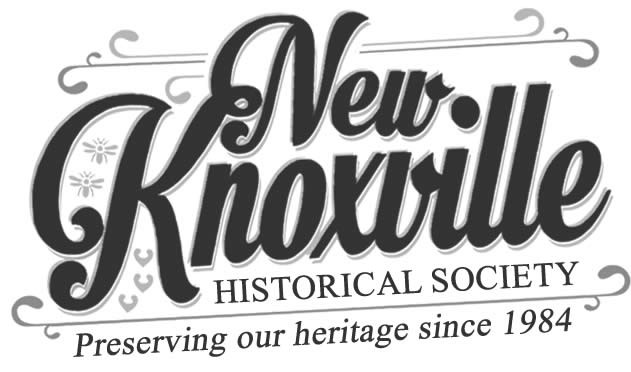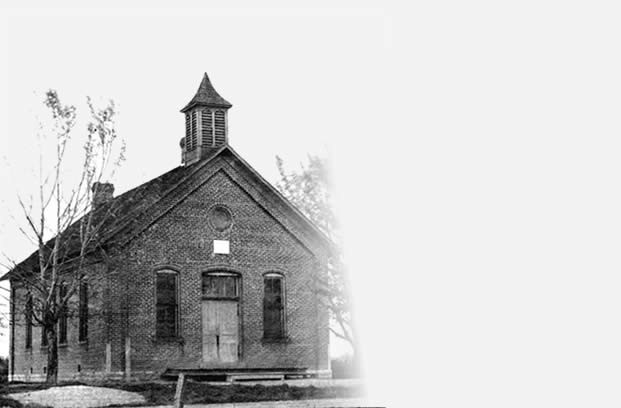“If There’s Anything Wrong, Stop Machinery Before You Do Anything About It,” Is Wm. W. Katterheinrich’s Advice to Farmers
Wm. W. Katterheinrich is one of the New Knoxville Katterheinrichs. But which one? There are, or until recently were, at least five Wm. Katterheinrichs! He is a son of the late Herman Katterheinrich. But which one? There were at least three Herman Katterheinrichs.
In the New Knoxville telephone directory today the Kucks head the list with 30 families listed, the Katterheinrichs are next with 23, and the Eversmans, Henschens, Meckstroths and Schroers are tied for third place with 14 families each. These families are so inter-related and inter-married that it would take years of living in residence among them to know who is related to who and who is who. In this case there are also Katterheinrichs who married Katterheinrichs, to the confusion of any neophyte genealogist.
Our William W. Katterheinrich of this sketch, who will be rounding out exactly three quarters of a century on his next birthday, is familiarly known as “Pony Bill”—I presume because he once drove the former “Pony Express,” the main route between St. Marys and New Knoxville, but which he served with a truck; and “Brick Bill” because he formerly owned and operated the local brick yard. He is a well known and congenial figure, known to everybody in the New Knoxville community. His hair has turned to silver and it is with slow and steady deliberation that he goes about his work at his son Robert’s Tin Shop, next to which he lives, answering the telephone, waiting on customers who come to buy and remain to chat and exchange ideas, and soldering pails, pans, milk-cans, or what have you? “I work for my son,” he said. “Years ago he worked for me. But I am happy to be useful and that I can still get around as good as I can.” We observed him helping to unload a shipment of sheet metal. It made him puff. He didn’t have to do it, but said “It’s the neighborly thing to do.”
He reminisced about his school days at the Hoelscher School which at the time had as many as 70 pupils enrolled, with only one teacher in charge. But of course, there were never nearly that number present on any one day. Truant officers hadn’t been invented yet, to the delight of many pupils and some of the parents. “I was the oldest in the family,” he said, “and I never went to school more than 3 or 4 months in any one year. But even in those 3 or 4 months I missed a lot. I frequently would get the kind of headaches which only came when it was time to get ready for school! So I was allowed to stay home. By going so irregularly I never really got into the swing of things. R. L. Montgomery was the teacher.” After helping on the farm at home until he was 21, he obtained employment with the late William Kruse as engineer of his steam-driven threshing, feed-cutting and wood-sawing operations, the latter two being winter activities. He recalled that Mr. Kruse carried on these activities for exactly 50 years without having received a scratch. This, Mr. Katterheinrich attributed to Mr. Kruse’s ironclad rule “If there’s anything wrong, stop the machine completely before you do anything about it.” As engineer his pay was $1 a day and meals, the latter being supplied by the farmers where they were operating at the time.
After five years of the foregoing he bought the Brickyard at New Knoxville from the late Adolph Eschmeier. Bricks in those days brought $5 per thousand, and they sometimes had as many as 500,000 to 600,000 on hand. He points with pride to the fact that the very first bricks that he made went into the construction of the Methodist parsonage 48 years ago. “The kilns had to be fired 9 days straight, and you had to know how to fire. If the bricks got too hot they would crumble, if the soil was not just right they would crumble, and if everything else wasn’t just right they would crumble. A certain kind of white soil was required. I remember one time when I had to be on duty 5 days straight, with only winks of sleep in between, because I couldn’t get-a-hold of any one who knew how to fire. When the kiln was finally completed I was so tired that I went home and slept 18 hours straight.” Changing weather was a constant hazard. A shower of rain on unbaked bricks meant their ruination. “Labor was never a problem because I paid above average wages, $2 a day, because the work was seasonal and certain operations had to be completed once under way.” After 9 years he sold out to George Holl.
Thereafter he was associated with his brother, the late Sam Katterheinrich in the local tin shop opposite the former Kuck restaurant. In the following years he tried his hand at various activities, including driving the “Pony Express” with a Model T, but returning to the tin and sheet metal business. He sold out to his son Robert in recent years and today is employed by him.
He is a lifelong and staunch member of the local Methodist church and has been active therein in numerous capacities since young manhood. Being musically inclined, he served his church and community in musical and other capacities, including that of being a member of the Official Board. He was organist for a while and for exactly 49 years he played the cornet in Sunday School regularly and in church for special occasions. “I had hoped to make 50,” he said, “but the dentist made that impossible. After he got through with me I simply couldn’t play anymore.” He played the tuba in the New Knoxville Band and recalled the colorful and spirited political rallies of his younger years at which the band played often, particularly at New Bremen. “There were about 15 of us in the band,” he recalled. “We would put hay ladders on a log wagon and slowly roll along, returning in the wee small hours. But it was great fun at the time. An outstanding occasion was when we played at the Firemen’s Convention at Defiance. Then we were really proud of ourselves.”
In his church he was a member of the well-known Katterheinrich Quartette. This consisted of his brother Sam, himself, and Noah and Elmer Katterheinrich. They sang at their church services, at funerals, even at the Wapakoneta Fair Grounds, and were a perennial feature at Brotherhood rallies at Methodist churches in this district. While singing at a Men’s Rally at the Methodist church in Wapakoneta, his brother Sam collapsed with a heart attack, departing this life immediately.
Mr. Katterheinrich believes that, since all of us “have the Old Nick in us,” and since we of today have wonderful travel facilities compared to the days of our youth, our younger generation should take their religious life more seriously and be even more faithful and regular in attendance than folks had been in his own youth. He then told of the religious emphasis and practices in his own parental home.
“The family drove to church both in summer and winter, no matter what the weather, in an open spring wagon. Our spring wagon was one of the long ones. The front seat was stationary. But the two back seats could be removed and then we would use it for hauling farm produce during the week. Rain or shine, we drove to church on our three-seater. One rainy day on the way to church, as we neared New Knoxville, a pedestrian opened his umbrella when it started to rain. Our horse was frightened, and off it went. It ran into the ditch, we all screamed, our spring wagon upset. My brother Sam was pitched over the dash board. I landed in a fence corner. The rest were around somewhere, wherever they had landed. We all got up, brushed ourselves off, and of course we kids cried. Nobody was hurt. The ground was soft. We were of course, badly shaken up and our clothes were a mess. But even that didn’t keep us from going to church that very morning.”
Sunday School in those days was held in the afternoon. The morning church service lasted two hours, from 9:30 to 11:30. One of the life thrills of Mr. Katterheinrich and his family was the erection and dedication of the present well arranged edifice of the New Knoxville Methodist church. “We didn’t think it could ever be possible,” he mused. “When it did happen, it was a day of great joy.”
He recalled some of the “highs” and “lows” of his youthful farm life. His spirits would hit bottom, he said, when he had to follow the corn plow, day after day, up one side of the row, down the other side, and then the next row and the next, hoe in hand, uncovering what had fallen shut, replanting where the crows had stopped for breakfast, hoeing the weeds that had managed to remain uncovered after the plow had done its work. (The writer heartily shares his aversion for following the corn plow, a practice which has long since been abandoned!)
But high lights of his youthful farm life included nut-gathering in the Fall and fishing in the late Spring and Summer, usually at certain near-by creeks, but occasionally at the St. Marys Reservoir. “Dip-nets were permitted then,” he recalled. “They would be suspended from a pole. I remember the day when I rented one for 10 cents from a little shop near the bulk-head. But even after dip-nets were outlawed, it seemed the fish would always bite at the reservoir!” Anyhow, when a group of neighbor boys went for a day’s fishing at the reservoir it was a gala event.
He married Augusta Schultz and they celebrated their golden wedding in 1946. Their six living children are: Alice (Mrs. Ferd Kuck) of New Knoxville; Esther (Mrs. Vern Shearer) of Cincinnati; Arnold of Jacksonville, Florida; Orlando (“Brick Jr.”) barber at New Knoxville but living in Wapakoneta; Robert of New Knoxville; Dorothy (Mrs. Carl Ferleman) of Peoria, Illinois.
Living Biographies
by Andrew Kay
In 1949 and 1950, Reverend Edwin Andrew Katterhenry (1900-1963), a minister and a native of New Knoxville, wrote the “Living Biographies” feature for the St. Marys Evening Leader under the pen name of Andrew Kay. These articles consisted of interviews with aging citizens, many from New Knoxville and St. Marys, relating their experiences from their younger days. After Rev. Katterhenry passed away in 1963, his widow, Florence Katterhenry returned to New Knoxville to live out the remainder of her years until 1982. For those of us who are grandparents today, we remember her as “Mrs. K”. In the final “Living Biographies” article Andrew Kay wrote about himself, thus revealing his identity to the general public.


